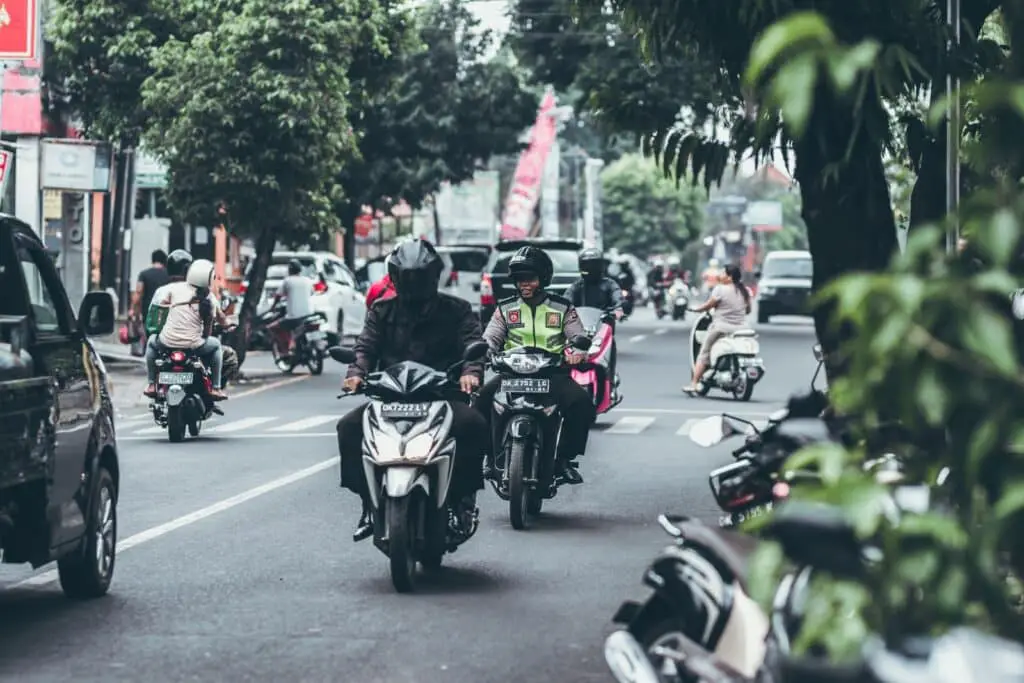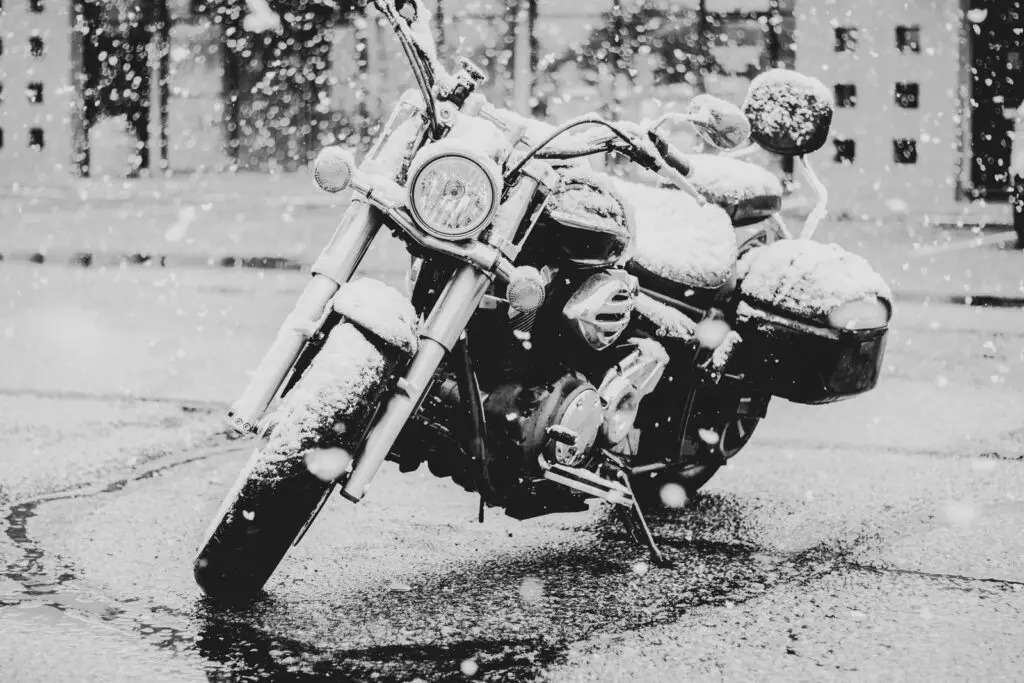When it comes to motorcycle parts, we all know they don’t last forever. And in most vehicles, it’s a battery that tends to die first. So this begs the question, how long does a motorcycle battery last?
A motorcycle battery should last between 2 – 5 years if you’re doing the right things to look after it. However, the sad reality is that most people don’t get more than 2 years out of their motorcycle’s battery.
But, like a lot of things, it’s not exactly that simple. There are a few other factors both avoidable and unavoidable to that play a big part in how long your motorcycle battery will last. Let’s take a look at these and work out how long your motorcycle battery will last in your certain use case.
Average Lifespan of Motorcycle Battery as a commuter

If you are motorcycling to work and back on the daily in a climate without frozen winters, expect a solid 3-5 years before you have any issues with your motorcycle battery. By riding each day you are charging your bike’s battery daily and keeping your battery in that perfect voltage range of 12.5-12.6.
Average Lifespan of Motorcycle Battery as a weekend warrior

Assuming you’re living in a climate that doesn’t hit frozen, your motorcycle battery shouldn’t give you any grief for at least 2 years as a weekend warrior.
How long a motorcycle battery last without being run?
Typically, a motorcycle battery will die between 3-4 months without the motorcycle being turned on. For most riders, turn over your engine is the main way they keep their battery fully charged. Therefore when they don’t ride for a few months their battery dies. Because starting your engine is what charges your motorcycle battery, without this charging most modern new motorcycle batteries won’t last more than 4 months.
The newer the battery, typically, the better the battery is at this with a new battery usually hitting the 4-month mark and an older battery sometimes getting only 1-month before it dies.
Not running your motorcycle for a long period of time is one of the most common reasons motorcycle batteries tend to die.
Story time!
A motorcycle rider stops commuting to work on the bike for a few weeks, then goes on a holiday for a month. Very quickly a few months pass and your motorcycle’s battery is dead.
Sound familiar?
How long will my motorcycle battery last in winter?

If you live in a climate with freezing winters, you need to run your once per week to make sure the motorcycle battery doesn’t die before spring. For newer batteries, you might be able to push this to two weeks but expect your battery to be dead within 2 weeks of not being ridden. Of course, if you get your bike stuck somewhere with a dead battery you can always jump start your motorcycle with a car.
This can be very challenging for most since there is a reason we don’t ride in winter, everything is frozen! But try to find a way to go for a quick ride, even if it’s just around the block, every little bit will help. But if it’s completely snowing outside, just don’t risk riding your motorcycle in the snow.
What can you do to keep your battery fully charged?
The best thing to do is to keep riding your motorcycle!
But if you know you’ve got a couple of weeks/months coming up that you won’t be able to take the bike out of the garage there are a few ways you can make sure you don’t come back to a dead motorcycle battery.
Invest in a Trickle Charger: Trickle charges or battery tender are designed to automatically charge your battery to the optimal voltage and current for long periods of time. This type of charging system is perfect for making sure your motorcycle battery doesn’t die all year round.
Disconnect your battery from the bike: If you know you just won’t be using the bike for a while and you can’t be afford a trickle charger or battery charger then you should disconnect your battery over the winter.
Simply open up that saddle seat and disconnect your battery from your bike. Just be careful while you do this and make sure you don’t connect positive to negative.
In winter keep your bike somewhere warmer: This sounds like an obvious one, but you would not believe how many people store their motorcycle in a sub 0 degrees C shed or barn during the winter, opt for your house attached heated garage, or somewhere warmer. If your battery stays warmer, this alone will not keep your battery charged but will dramatically help extend the life of your battery.
Short periods of cold are fine, but if it’s anything over 48 hours, expect cold weather conditions to affect your battery.
Types of Motorcycle Batteries
Motorcycle batteries come in many different types. The type of battery that you choose will depend on your bike and how it is used. Below, we’ll identify the different types of motorcycle batteries available on the modern market so you can get an idea of what might be best for your specific application.
Standard wet cell
This is the most common type of motorcycle battery. It’s filled with a chemical solution (electrolyte) and is sealed, which means the battery cannot be changed without special tools. The acid in this battery can spill out if it is tipped or inverted, so care must be taken when charging or replacing these types of batteries.
Absorbed Glass Mat (AGM) Batteries
AGM batteries uses fiberglass between the plates to help contain the acid. This allows it to be mounted in almost any position and gives it more safety than standard wet cell batteries. It is not as spill-proof as gel cells, but they can still be tipped over without damaging the battery.
The sealed agm battery seems to be a popular type of battery very popular on motorcycles because they last longer than standard wet cells and can be mounted in any position.
Gel Cells
Gel cell batteries are another spill-proof battery that uses a thick, jelly-type acid to power the battery. Gel cell batteries are more expensive than standard or AGM motorcycle batteries but tend to last longer between charges. Gel cell batteries cannot withstand freezing temperatures like wet cells can.
Lithium motorcycle battery
This type is very popular among street bike riders because it is lightweight and powerful. They also do not produce as much heat when in use. Like gel batteries, they cannot withstand freezing temperatures and are expensive compared to standard wet cell batteries.
But they are not only lightweight but can outlive all other battery types. The maximum capacity or battery life of these batteries isn’t necessarily better, but they do allow for more charge-discharge cycles. These batteries are nothing like car batteries.






